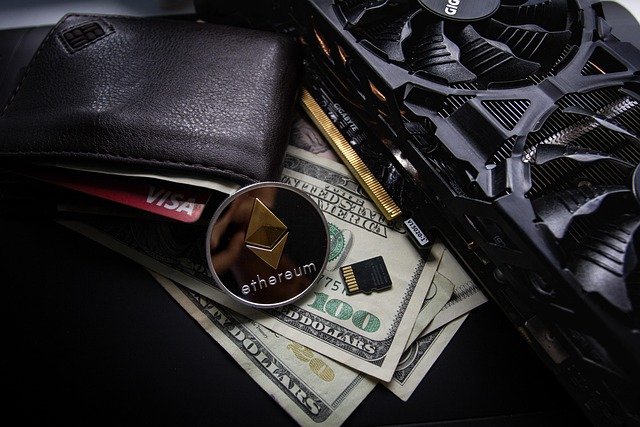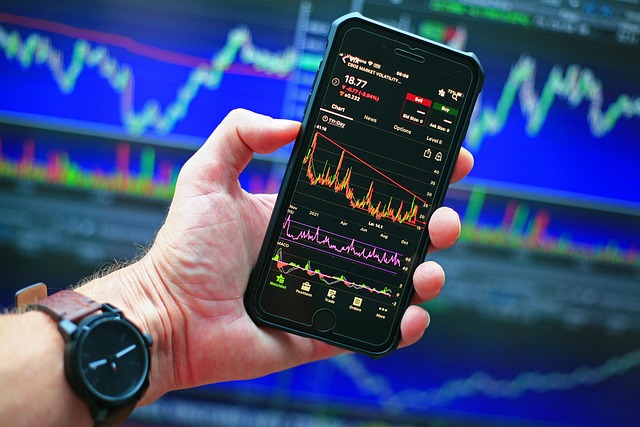Understanding Crypto Wallets in 2025
As digital currencies continue to gain traction, the importance of secure crypto wallets has never been more crucial. A crypto wallet is a digital tool that allows users to store and manage their cryptocurrencies. With the growing adoption of cryptocurrencies, understanding the different types of wallets, their functionalities, and how to choose the right one for your needs is essential for both new and experienced investors. This article aims to provide a comprehensive guide on crypto wallets in 2025, helping readers make informed decisions about storing and managing their digital assets.

What is a Crypto Wallet?
A crypto wallet is a software program or hardware device that allows users to store their digital currencies securely. Unlike traditional wallets that hold physical cash, crypto wallets store public and private keys that enable users to access their cryptocurrencies on the blockchain. The public key acts as an address that can be shared with others, while the private key must be kept secret, as it provides access to the funds. Understanding the intricate workings of these keys is crucial; if someone gains access to your private key, they can control your assets. Additionally, wallets can be classified into different categories based on their management of keys, such as custodial and non-custodial wallets, which further influences user security and control.
There are also wallet types based on how they connect to the blockchain. For instance, some wallets connect directly to the blockchain to allow for transactions, while others may utilize intermediaries. This distinction impacts transaction speeds, fees, and overall user experience. Understanding these technical nuances can significantly improve the effectiveness of your crypto management strategy.
Types of Crypto Wallets
There are several types of crypto wallets, each offering different levels of security and convenience. Understanding these types can help you determine which wallet is best for your needs. Here’s a more detailed look at the various wallet types:
1. Hot Wallets
Hot wallets are connected to the internet and are generally more convenient for frequent transactions. They include web wallets, mobile wallets, and desktop wallets. While hot wallets are user-friendly and allow for quick access to funds, they are more vulnerable to hacking and theft due to their online nature. Popular examples of hot wallets include MetaMask and Exodus, which provide a user-friendly interface but lack the security of cold storage. Hot wallets are ideal for users who trade frequently and need immediate access to their funds, but they should be used with caution and supplemented with additional security measures.
Users should also be aware of phishing attempts that may target hot wallet users, as attackers often exploit the convenience of these wallets. To enhance security, users can consider using browser extensions with added privacy features or VPNs while accessing their hot wallets. Additionally, enabling notifications for login attempts and account activity can provide early warnings about unauthorized access.
2. Cold Wallets
Cold wallets, on the other hand, are offline storage solutions that provide a higher level of security. Examples include hardware wallets and paper wallets. Hardware wallets, like the Ledger Nano and Trezor, store your private keys on a physical device that is not connected to the internet, significantly reducing the risk of online attacks. Paper wallets involve printing your keys on paper and storing them in a safe place. Cold wallets are ideal for long-term storage of cryptocurrencies, as they are less susceptible to online threats.
However, they require a bit more technical knowledge and care to manage effectively, as losing a hardware wallet or a paper wallet means losing access to your funds. Users should consider creating multiple backups and storing them in different locations to mitigate this risk. Furthermore, it's advisable to use hardware wallets with built-in security features, such as biometric authentication or PIN protection, to enhance their security further. Regular updates from hardware wallet manufacturers should also be monitored to ensure that users are protected against newly discovered vulnerabilities.
3. Multi-Signature Wallets
Multi-signature wallets require multiple private keys to authorize a transaction, adding an extra layer of security. This type of wallet is particularly useful for businesses or groups that want to ensure that no single individual can access funds without the consensus of others. For instance, a multi-signature wallet can be set up so that at least two out of three partners must approve a transaction, thereby significantly reducing the risk of unauthorized access. This feature also encourages accountability among partners and can be a valuable tool for managing organizational funds.
Multi-signature wallets often provide advanced features for tracking transactions and managing permissions among multiple users, making them suitable for both collaborative projects and family trust accounts. These wallets can also include transaction limits and alerts to monitor spending, adding another layer of oversight and control. As organizations become more involved in the cryptocurrency space, the demand for multi-signature solutions is likely to increase.
Choosing the Right Wallet
When selecting a crypto wallet, consider the following factors:
- Security: Look for wallets with strong encryption, two-factor authentication, and backup options. Research the wallet’s reputation and user reviews to gauge its security track record. Consider wallets that have undergone third-party security audits, as this can provide an additional layer of assurance. Additionally, wallets that offer insurance against theft or loss can provide peace of mind.
- Control: Ensure that you have full control over your private keys. Custodial wallets, while convenient, mean that a third party holds your keys, which can pose a risk. Non-custodial wallets give users full control and ownership of their assets, making them a preferred choice for security-conscious users.
- Usability: Choose a wallet that is user-friendly and suits your level of expertise. Some wallets are designed for advanced users, while others cater to beginners. Look for wallets with comprehensive customer support and educational resources, such as tutorials and FAQs, to assist users in navigating their features effectively.
- Compatibility: Check if the wallet supports the cryptocurrencies you intend to store. Not all wallets can handle the same types of digital currencies. Additionally, ensure that the wallet is compatible with various devices and operating systems to facilitate ease of access.
- Recovery Options: Look for wallets that offer recovery phrases or backup options to help you regain access in case of loss or theft. Some wallets offer features like social recovery, where trusted contacts can help restore access, which can be a valuable safety net.

Popular Crypto Wallets in 2025
As of 2025, several crypto wallets stand out for their features and security:
1. Binance Wallet
The Binance wallet, associated with the Binance exchange, offers a secure way to store various cryptocurrencies. With its user-friendly interface and robust security features, it’s a popular choice among traders. Users can sign up using this link to create an account and access the wallet. The wallet supports various tokens and includes features like staking and trading directly from the wallet, allowing for a seamless experience for active traders. Additionally, Binance regularly updates its security protocols and offers insurance against hacks, enhancing user confidence. The wallet also integrates seamlessly with the Binance ecosystem, providing users with access to a variety of DeFi projects.
2. MEXC Wallet
MEXC provides a versatile wallet solution for crypto enthusiasts. It supports a wide range of cryptocurrencies and offers features like staking and trading. New users can register through this link to gain access to its services. MEXC’s wallet is particularly favored for its low transaction fees and seamless integration with the exchange, making it an attractive option for frequent traders. Additionally, MEXC has implemented robust security measures, including multi-factor authentication and end-to-end encryption. The wallet also features real-time market data, helping users make informed trading decisions.
3. Bitget Wallet
Bitget is known for its trading capabilities, but it also offers a secure wallet for storing assets. Its referral program is attractive, and you can sign up using this link to get started. The wallet features advanced security measures and a user-friendly interface that appeals to both novice and experienced users, making it a great choice for anyone looking to manage their crypto assets efficiently. Bitget also focuses on integrating DeFi services, allowing users to maximize their asset's utility, including options for yield farming and liquidity provision.
4. Bybit Wallet
Bybit has become a reputable exchange with an accompanying wallet that prioritizes security and user experience. You can register through this link to access their wallet features. Bybit’s wallet is known for its integration with their trading platform, allowing for efficient asset management and trading. It also includes features that cater to the needs of advanced traders, such as detailed analytics and performance tracking. Bybit regularly updates its wallet features to enhance user experience and security, making it a top choice for traders. The wallet also supports advanced order types, allowing users to implement sophisticated trading strategies directly from the wallet interface.
The Importance of Security
Security is paramount when it comes to managing cryptocurrencies. Given the rise in cyberattacks targeting crypto wallets, adopting best practices is crucial. Here are some tips to enhance your wallet security:
- Use Hardware Wallets: For long-term storage, hardware wallets provide superior protection against online threats. Always purchase hardware wallets from reputable manufacturers to avoid tampering. Consider using hardware wallets that support multiple cryptocurrencies for added versatility. Additionally, regularly check for firmware updates from the manufacturer to ensure your device is secure against new vulnerabilities.
- Enable Two-Factor Authentication: Adding an extra layer of verification can significantly reduce the risk of unauthorized access. Use authenticator apps rather than SMS for better security. Regularly review and update your security settings to ensure maximum protection, and consider using different authentication methods for different wallets to enhance security.
- Regularly Update Software: Ensure your wallet software is up to date to benefit from the latest security patches. Be wary of auto-updates; verify the source before allowing updates. Consider following reputable crypto news outlets for alerts about vulnerabilities and software updates.
- Be Wary of Phishing Attempts: Always verify links and avoid clicking on suspicious emails or messages. Use bookmarks for frequently visited sites to prevent falling victim to phishing scams. Educate yourself about common phishing tactics to better recognize potential threats, and consider using browser extensions that help identify fraudulent websites.
- Educate Yourself: Stay informed about the latest security threats and trends in the cryptocurrency space. Knowledge is your best defense against potential threats. Participate in forums and communities to share knowledge and learn from others' experiences. Additionally, consider attending webinars and workshops to improve your understanding of cryptocurrency security.
Future Trends in Crypto Wallets
As the cryptocurrency landscape evolves, so too will the wallets that serve this market. Here are some trends to watch for in 2025:
1. Enhanced Privacy Features
Privacy is becoming increasingly important to users. Future wallets may integrate advanced privacy features, allowing for anonymous transactions and enhanced user confidentiality. This could include technologies like zero-knowledge proofs to verify transactions without revealing user identities. These advancements will likely attract users who prioritize privacy in their financial transactions, as well as those operating in regions with stringent financial regulations. Additionally, wallets may implement privacy coins and features that allow users to obfuscate transaction details, appealing to a broader audience concerned about surveillance and data privacy.
2. Cross-Platform Compatibility
As more cryptocurrencies emerge, wallets will likely offer greater compatibility across different platforms, enabling users to manage multiple assets seamlessly. Integration with decentralized exchanges (DEXs) may also become a standard feature, allowing users to trade directly from their wallets without needing to transfer funds to an exchange. This will enhance liquidity and user experience by allowing for more efficient trading strategies. Moreover, wallets may begin to support cross-chain functionalities, allowing users to swap assets across different blockchains effortlessly. This interoperability will be crucial as the blockchain ecosystem continues to grow and diversify.
3. Integration with DeFi
With the growth of decentralized finance (DeFi), wallets will increasingly integrate DeFi functionalities, allowing users to lend, borrow, and earn interest on their assets directly from their wallets. This integration will make it easier for users to participate in the DeFi ecosystem without needing multiple platforms, thus enhancing the overall user experience. Expect wallets to include features for yield farming and staking directly within the wallet interface, along with analytics tools to track performance and returns. Furthermore, as DeFi protocols continue to innovate, wallets may evolve to support new financial instruments and services, catering to a more sophisticated user base.
4. User-Centric Design
Wallets are expected to become more user-friendly, making it easier for newcomers to understand and navigate the complexities of cryptocurrency management. This includes more intuitive interfaces and educational resources integrated into the wallet experience, enabling users to learn as they manage their assets. Enhanced customer support, such as live chat and comprehensive FAQs, will also become a crucial component of user-centric design. Additionally, gamification elements might be introduced to encourage users to learn more about cryptocurrencies and improve their management skills. This shift toward a user-centric approach will likely lead to increased adoption rates among individuals who may have previously hesitated to engage with cryptocurrencies.

Conclusion
In conclusion, understanding crypto wallets is vital for anyone looking to engage with cryptocurrencies in 2025. With the right knowledge, you can choose a wallet that meets your needs while ensuring the security of your digital assets. As the crypto market continues to evolve, staying informed about the latest trends and best practices will empower you to make the most of your investment. Being proactive about security and wallet management will also enhance your overall cryptocurrency experience. As you navigate this dynamic landscape, remember to review your wallet options periodically and adapt to changing technologies and market conditions.
For further reading on cryptocurrency wallets and their security features, consider checking out resources like CoinDesk and Investopedia.
Moreover, as the cryptocurrency space continues to mature, user education and community engagement will play a pivotal role in shaping the future of crypto wallet technologies. Users should actively seek out resources, participate in discussions, and stay updated on regulatory changes that may affect wallet security and functionality. By fostering a well-informed community, we can enhance the overall security and usability of crypto wallets, paving the way for a more secure digital currency ecosystem.
Ultimately, as we approach the second half of the decade, the landscape of crypto wallets will likely become more intricate, reflecting the growing complexities of the digital currency market. Users must remain vigilant and informed, adapting to new technologies and emerging threats to ensure their assets remain secure.